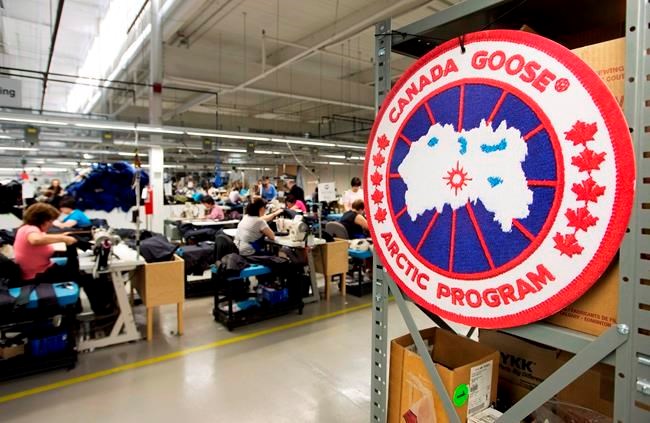The head of Canada Goose Holdings Inc. is addressing head-on allegations of labour unrest at some of the company’s Canadian factories while the luxury parka maker moves into new markets, expands its product offerings and doubles down on quality.
In an interview with The Canadian Press, Canada Goose president and CEO Dani Reiss discussed the company’s rebounding financials in the midst of a pandemic, thanks in part to soaring online sales.
“In a year that began with so many unknowns, it was very difficult to budget the year, to imagine what was going to happen and to forecast,” he said. “So we leaned into what we knew to be true.
“We knew the retail traffic would be down because of the pandemic so we focused on digital. We knew that China was likely further along in their recovery and so we focused on bricks and mortar in China.”
It’s a strategy that paid off, with Canada Goose reporting its largest revenue for a quarter – ever – last month.
Canada Goose has eight facilities in Canada with about 2,800 workers that make the company’s down-filled parkas – a made-in-Canada pledge the company committed to shortly after Reiss became CEO.
Its three Toronto facilities are unionized while its three Winnipeg locations and two Montreal locations are not.
Some labour organizers say there's been intimidation of pro-union workers in Canada Goose's non-unionized factories.
Reiss said the number of unionized workers at Canada Goose has grown more than 175 per cent under his 20-year tenure.
“When I started working here we had one factory which was unionized, and since then I've always had a great relationship with (the union),” he said.
“We respect the rights of all workers, we respect the rights of everybody to unionize, and we have always enjoyed a great relationship with the union.”
Labour organizer Rabia Syed said that efforts to unionize garment workers at Canada Goose's Winnipeg factories have been met with intimidation and retaliation by management.
She said the workforce is made up primarily of immigrant women, many of whom worry about losing their jobs and means of survival for their families.
The biggest issues are low wages, such as a piece-rate workers say is lower at the non-unionized factories, and health and safety concerns, she said.
“They feel like they aren’t treated with respect,” said Syed, the organizing co-ordinator with the Workers United Canada Council. “They don’t speak up out of fear they’ll lose their job.”
But Reiss said the health and safety of employees is the “absolute top priority.”
“We take it very seriously,” he said, adding that the company’s COVID-19 health and safety measures have been reviewed by labour boards and that its protocols meet or exceed standards. “We've been very meticulous when it comes to this.”
The company on Wednesday announced plans to offer all employees up to four hours of paid leave to receive COVID-19 vaccinations to “remove barriers and ensure equitable access,” the company said in a statement.
Canada Goose was launched by Reiss’ grandfather, a Polish immigrant in Toronto, as Metro Sportswear in 1957.
Reiss took over as CEO in 2001 and in late 2013, the company announced that U.S. private equity giant Bain Capital acquired a majority stake in the extreme weather outerwear maker. In 2017, Canada Goose went public.
The winter clothing maker has seen meteoric growth over the last two decades, expanding sales through its own retail stores, online and wholesale.
Canada Goose is also making headway in new markets, especially in Asia, winning over new customers with the iconic outerwear's distinctive red, white and blue patch despite climates that never approach Arctic temperatures.
“We really focused on China this past year,” Reiss said, noting that the company doubled its store footprint to 10.
“That’s actually a relatively small number of stores compared to other global brands, so there's a lot of opportunity to continue to grow and evolve in that market.”
To continue that expansion, Reiss said the upscale parka maker is now branching out into new products – but avoiding the pitfalls of going “down market” that have diminished other luxury brands.
“We've diversified our product range tremendously over time from a warm jacket to a full range of outerwear of all kinds,” he said. “Lightweight outerwear has become really important to our assortment as has wind wear and knitwear.”
Canada Goose also introduced fleece this year and will be launching footwear next year, Reiss said.
The goal is to continue to make “best in class” products, he said.
Reiss added that craftsmanship, quality and sustainability will remain the key focus with any new products.
“We're certainly not looking to go down market,” he said. “We don’t have to dilute ourselves in order to grow.”
This report by The Canadian Press was first published March 23, 2021.
Companies in this story: (TSX:GOOS)
Brett Bundale, The Canadian Press



